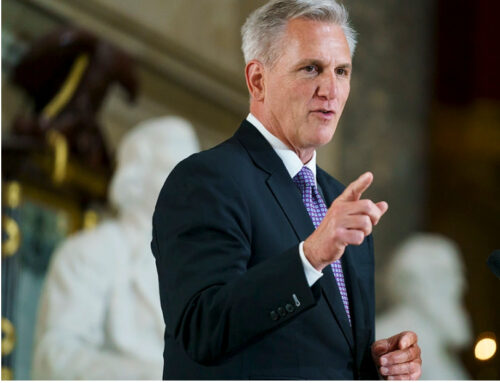Congress has returned from its summer recess with a number of items on its plate. First up is the usual fall wrangle, funding the government to avoid a shutdown. But other items are new and could have far-reaching effects for investors, including a bipartisan threat to “stretch IRAs”. We review below these items and others likely to claim Congress’s attention this fall.
Government funding
By now the drill is familiar. As the September 30th end of the government’s fiscal year approaches, Congress must pass legislation appropriating funds to avert a government shutdown. Under the Senate filibuster rules, 60 votes are required to pass funding legislation. Because the Republicans hold 51 Senate seats, at least some Democratic support is needed.
Typically, Congress comes through with the necessary legislation, often at the last minute. But occasionally, as in 2013, the parties fail to reach agreement, resulting in a shutdown of at least a few days.
This year, both parties are eager to avoid a shutdown in the shadow of the approaching midterm election. Congress is now poised to pass bipartisan legislation that will provide funding at least until after Election Day. President Trump’s public statements have vacillated between signing the appropriations legislation, and vetoing the bill unless Congress provides funds to erect a wall on the Mexican border. We expect that in the end a shutdown will be averted, but it is difficult to know with certainty what the president ultimately will decide to do.
Retirement Enhancement and Savings Act (RESA)
The Retirement Enhancement and Savings Act (RESA) is a bipartisan (!) effort to extend access to pension plans for employees of small companies, and to ease market concerns that impede the inclusion of lifetime income products in employer-sponsored plans. Public reaction to RESA has been favorable, and the bill finds extensive support on both sides of the aisle.
This congratulatory environment, however, has obscured a single revenue-raising provision at the end of the RESA bill. Under current law, beneficiaries who inherit an IRA or 401(k) account upon the death of the account owner can choose to take payments over their expected lifetimes. Amounts remaining in the retirement account continue to accumulate tax-deferred. This ability to “stretch” inherited retirement assets provides significant tax deferral benefits.
RESA would limit “stretches” to aggregate account values under $450,000. To the extent an individual’s aggregate IRA and 401(k) account value exceeds $450,000, the excess must be distributed (and the associated income tax paid) within five years of the death of the account holder, unless one of the following exceptions applies:
| – | The beneficiary is the spouse of the deceased. | ||
| – | The beneficiary is disabled or chronically ill. | ||
| – | The beneficiary is less than 10 years younger than the deceased. | ||
| – | The beneficiary is a child of the deceased who has not reached the age of majority. |
There is a chance that the “stretch” provision could be dropped from the bill before RESA is enacted. As we discuss in more detail below, the Republicans did not propose to change the “stretch” rules in similar legislation aimed at expanding retirement savings opportunities. If the “stretch” change does remain in the RESA bill, we expect the rule to apply to distributions from retirement accounts held by individuals who die after the bill’s effective date.
The other (favorable) provisions of RESA would, in part:
| • | Authorize the establishment of multiple employer 401(k) plans for small companies. | ||
| • | Provide a tax credit for companies that provide automatic plan enrollment. | ||
| • | Repeal the maximum age (70-1/2) for traditional IRA contributions. | ||
| • | Permit portability of annuity contracts between plans. | ||
| • | Provide a fiduciary safe harbor for prudent selection of annuity contracts, protecting fiduciaries from liability if the carrier later fails to make payments. |
Although predicting Hill action is always uncertain, we expect Congress to pass some version of retirement legislation before the end of the year (but likely after the election).
In anticipation of Congressional action, President Trump has issued an executive order that seeks to implement as much of RESA as possible without Congressional action. The order directs the Labor and Treasury Departments to issue regulatory guidance that, consistent with current law, (i) allows a group of employers to form a multiemployer retirement plan; (ii) allows small companies to establish plans more easily by eliminating unnecessary administrative and compliance burdens; and (iii) loosens the required minimum distribution (RMD) rules so retirees can leave more funds in their accounts to be used when they are older.
Because Congressional action is required to implement a comprehensive overhaul of the RMD and other retirement rules, an administration has only limited ability to make changes unilaterally. But administrative actions can provide some relief, say, by reducing compliance burdens and updating the actuarial tables used to compute RMDs.
“Tax Reform 2.0”
Last week, the Republican leadership in the House released a series of bills denominated “Tax Reform 2.0”. Tax Reform 2.0 comprises three component bills:
| • | The Family and Small Business bill would make permanent the provisions of the Tax Cuts and Jobs Act that otherwise will expire in 2025. Such provisions include, among others, the reduced individual tax rates, the increased standard deduction, the reduced tax rate on pass-through entities, and the higher AMT and estate tax exemptions. Not all of the extensions are favorable; the bill also would make permanent the new limitations on itemized deductions, most notably the $10,000 annual limitation on deducting state taxes. | ||
| • | The Family Savings bill would incorporate many of the provisions of the Retirement Enhancement and Savings Act discussed above. But the Family Savings bill includes additional provisions that do not necessarily have bipartisan support, such as expanding further the tax-favored use of 529 funds; exempting aggregate retirement account balances under $50,000 from RMD requirements; and establishing new Universal Savings Accounts into which taxpayers may contribute $2500 annually and withdraw funds (including earnings) at any time without tax. Conversely, the Family Savings bill does not include the RESA provision shielding fiduciaries from liability in the selection of annuity contracts.
Notably, the bill also does not include the provision curtailing the availability of stretch IRAs discussed in the RESA section above. The exclusion of the stretch IRA limitation from the Family Savings bill raises the possibility of the provision dropping out of the RESA bill as well. In that case, however, fiscally conservative members might require a different revenue-raising provision to offset RESA’s cost. Getting members to agree on an acceptable tax increase is not easily accomplished. |
||
| • | The American Innovation bill would increase the limitation on the deduction of certain start-up expenses from $5000 to $20,000, and increase the income level for phase out of the deduction from $50,000 to $120,000. |
Under Senate rules, 60 votes (and thus some Democrats’ support) typically are needed to overcome a filibuster and pass legislation. There is an exception to those rules, however, in some situations for tax legislation that does not reduce government revenue in the period beginning ten years after the legislation is passed. The Republicans used this exception to pass without Democratic support the Tax Cuts and Jobs Act, which is why many of that law’s provisions expire by their terms.
In seeking to make changes permanent, Tax Reform 2.0 necessarily extends the revenue loss of the Tax Cuts and Jobs Act beyond ten years. As such, the Senate filibuster rule exception cannot apply, and 60 votes are needed for passage in that chamber. Senate Democrats have made clear that they have no interest in extending tax legislation that they opposed in the first place.
Thus, Tax Reform 2.0 has no path to passage through Congress. The House Republicans surely realize this, but presumably put forth the proposal as the midterm election approach to remind voters of their ongoing determination to lower taxes.
Political considerations
Hanging over Congress’s deliberations is the upcoming mid-term election. Traditionally in an election year Congress limits its days in session to give members more time at home to campaign. Breaking with that tradition, Senator McConnell intends to keep the Senate in session through October. Doing so allows the Republican-controlled Senate to continue approving conservative federal judges, while keeping vulnerable Democratic Senators in Washington rather than campaigning in their home states. It promises to be an interesting time as each party seeks a strategic advantage in the waning days of the 115th Congress.
Andrew H. Friedman is the founder and principal of The Washington Update LLC and a former senior partner in a Washington, D.C. law firm. He and his colleague Jeff Bush speak regularly on legislative and regulatory developments and trends affecting investment, insurance, and retirement products. They may be reached at www.TheWashingtonUpdate.com.
The authors of this paper are not providing legal or tax advice as to the matters discussed herein. The discussion herein is general in nature and is provided for informational purposes only. There is no guarantee as to its accuracy or completeness. It is not intended as legal or tax advice and individuals may not rely upon it (including for purposes of avoiding tax penalties imposed by the IRS or state and local tax authorities). Individuals should consult their own legal and tax counsel as to matters discussed herein and before entering into any estate planning, trust, investment, retirement, or insurance arrangement.
Copyright Andrew H. Friedman 2018. Reprinted by permission. All rights reserved.













